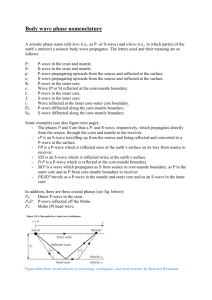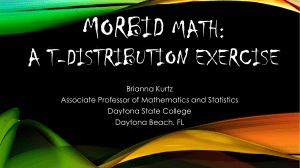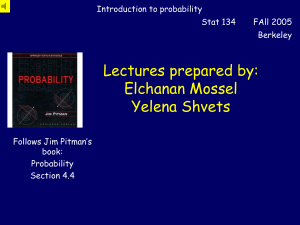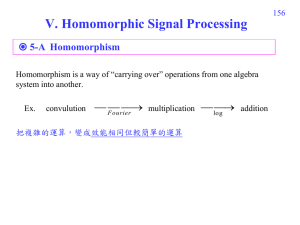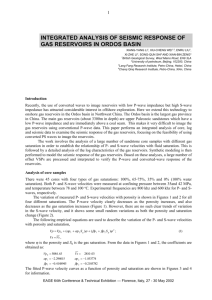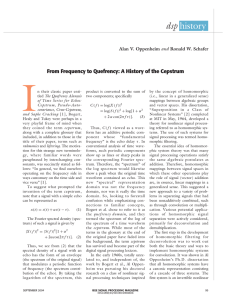Discrimination of P-Wave Interval in Time
advertisement
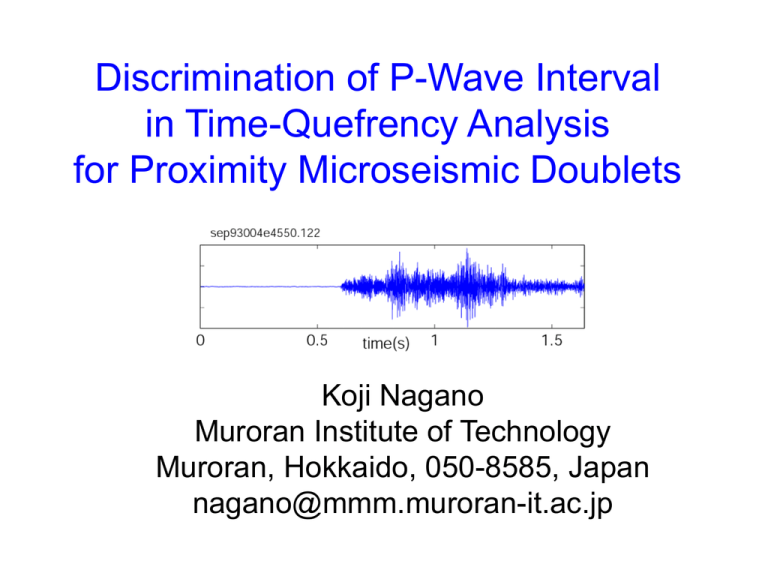
Discrimination of P-Wave Interval in Time-Quefrency Analysis for Proximity Microseismic Doublets Koji Nagano Muroran Institute of Technology Muroran, Hokkaido, 050-8585, Japan nagano@mmm.muroran-it.ac.jp What we want to know Geothermal fracture reservoir Cloud Fine structures Flow paths in geothermal reservoir Soultz in France 2 Proximity microseismic doublets • Similar waveforms • Interval between events is short, <1s. 3 Accurate location in proximity MS doublets microseismic doublets with long interval different velocity model 1st event long interval 2nd event proximity microseismic doublets More precise than doublets with long interval 4 Relative location P-wave interval Relative location The relative location estimated based on the interval is much precise than that calculated from the each sources. Fine structure of fracture reservoir 5 Cepstrum analysis for proximity MS doublets • Cepstrum analysis is used to detect interval 6 Cepstrum y(t ) x(t ) rx(t T ) Interval T Y ( f ) X ( f )[1 r exp( j 2fT )] Y( f ) X ( f ) 2 2 1 r 2 2r cos 2 fT logY ( f ) log X ( f ) log1 r 2 2r cos2fT 2 2 C (q) F 1 log X f F 1 log1 r 2 2r cos2fT 2 7 Two cepstrum peaks • Which is the P-wave interval in the two cepstrum peaks ? P S P? S? 8 quefrency - Window function suppresses data after the onset of the 2nd S-wave. - I shorten the window function. - When the window function suppresses the 2nd S-wave, S-waves lose similarity and the S-wave peak decreases. cepstrum Time-quefrency analysis - Cepstrum-quefrency graph is used to detect the interval. cepstrum Terminal of window 9 quefrency Contour plot and cepstrum graph quefrency Contour plot: To discriminate the P-wave peak from the S-wave peak identification of the cepstrum peaks - continuity of the peak, - comparison of the peak width - exclusion of artifacts cepstrum Terminal of window - low resolution in quefrency Cepstrum graph: - precise detection of quefrency quefrency - difficult discrimination from artifacts 10 4 check points in contour plot P-wave interval peak S cepstrum quefrency (1) starts more early. The window function suppresses the 2nd S-wave. The 1st and 2nd P-waves are isolated. (2) is more stable. The S-wave peak decreases because the S-wave loses similarity (3) is lower. The P-wave is smaller than the S-wave (4) is narrower. P 11 Terminal of window Soultz geothermal field 15089 MS events were located during hydraulic injection in 1993. The data were monitored at 4 stations Data length was 1.6 s. Sampling frequency was 5000 Hz. Proximity MS doublets were 230 12 Typical result of the time-quefrency analysis quefrency Early start Stable, low, and narrow peak Some artifacts are visible cepstrum Terminal of window 13 quefrency 9 events show P-wave interval peak quefrency quefrency The P-wave interval should be detected at 4 stations to determine relative location. Terminal of window quefrency quefrency Terminal of window Terminal of window 14 Terminal of window Relative location The P-wave intervals in the Proximity MS doublets are compared among the 4 stations. Moriya 2003 showed 4752 relative locations of MS doublets with long interval. We will examine my relative locations and his data. 15 Conclusions • Proximity MS doublets are a good tool to estimate fine structures of a geothermal reservoir. • Time-quefrency analysis can provide the P-wave interval between the proximity MS doublets. • 4 check points are indicated to discriminate the P-wave interval in a contour plot of the time-quefrency analysis. • I have estimated relative locations of 9 events recorded in Soultz geothermal field. 16 Cepstrum and auto-correlation 18 Rotation of coordinates 3 component seismic detector was used. 3D particle motion associated with seismic waves was measured. Data in the direction of the P-wave polarization is analyzed in the time-quefrency analysis. The data is larger than that in the other directions We have clear P-wave peak in the contour plot when the data in the direction of the P-wave polarization is analyzed in the time-quefrency analysis. 19 A result of the rotation X-Y-Z P-wave polarization is estimated in the data at the onset of the P-wave P-S1-S2 S1: the maximum variance on S-wave plane S2: P and S1 are perpendicular 20
